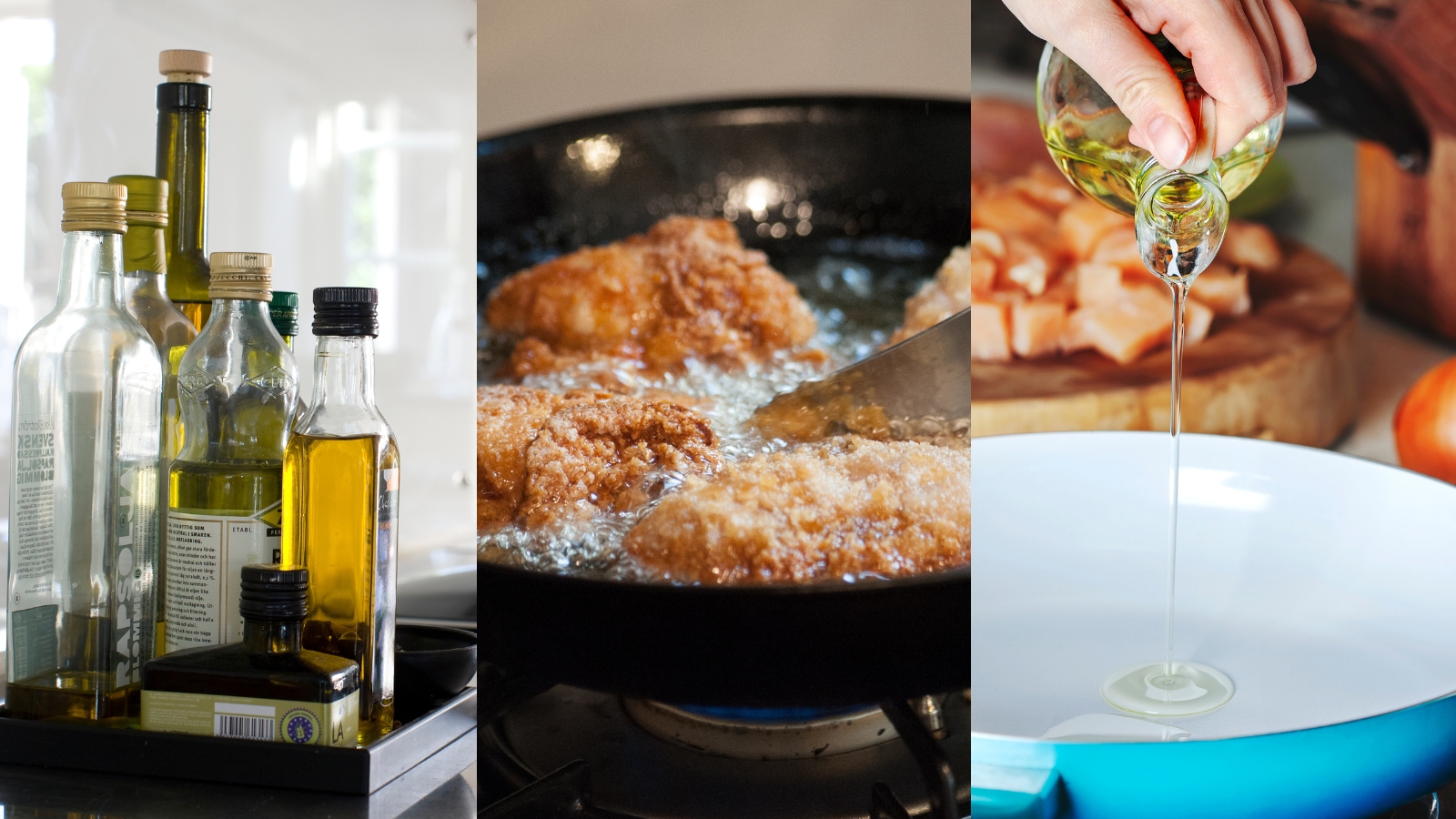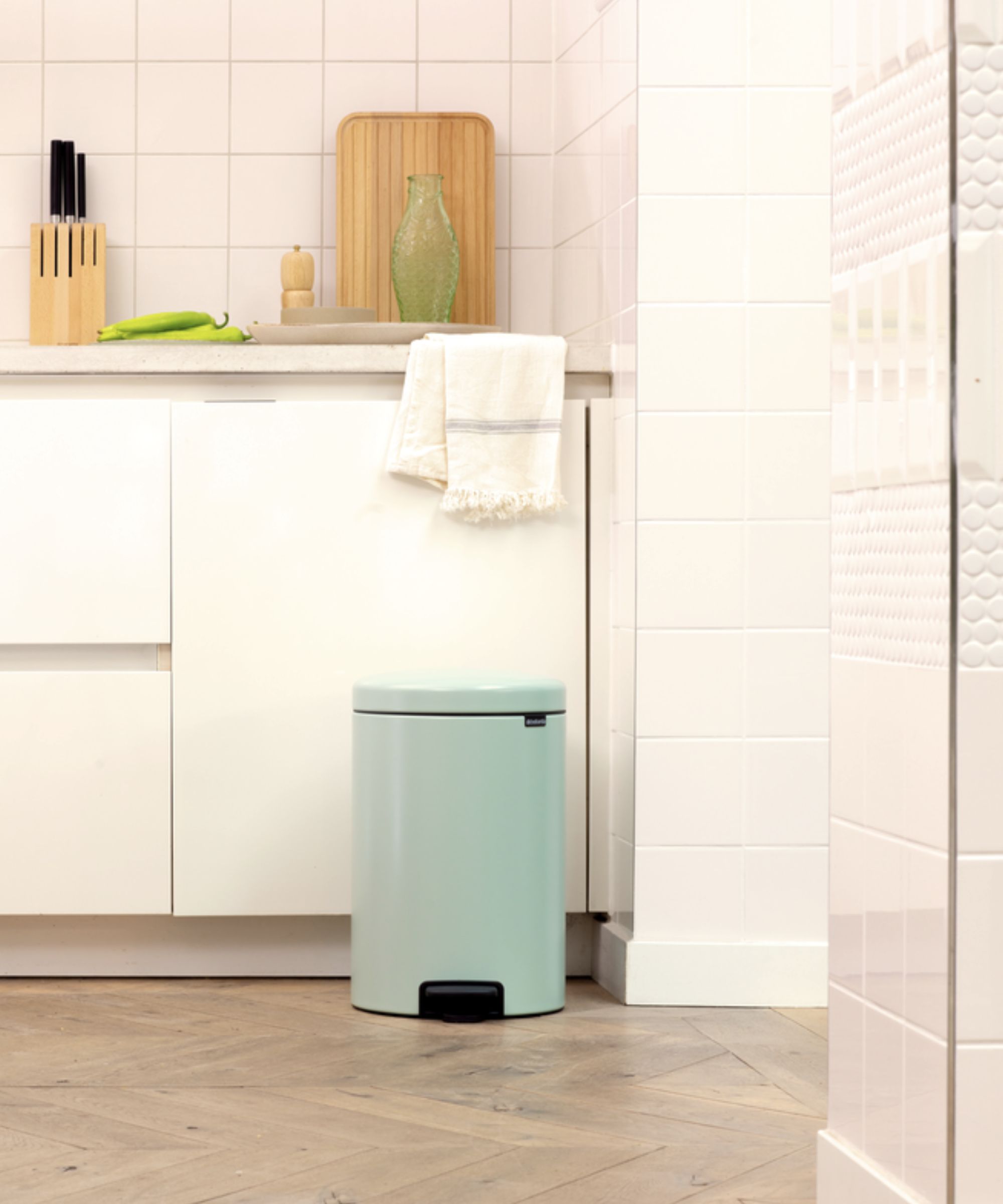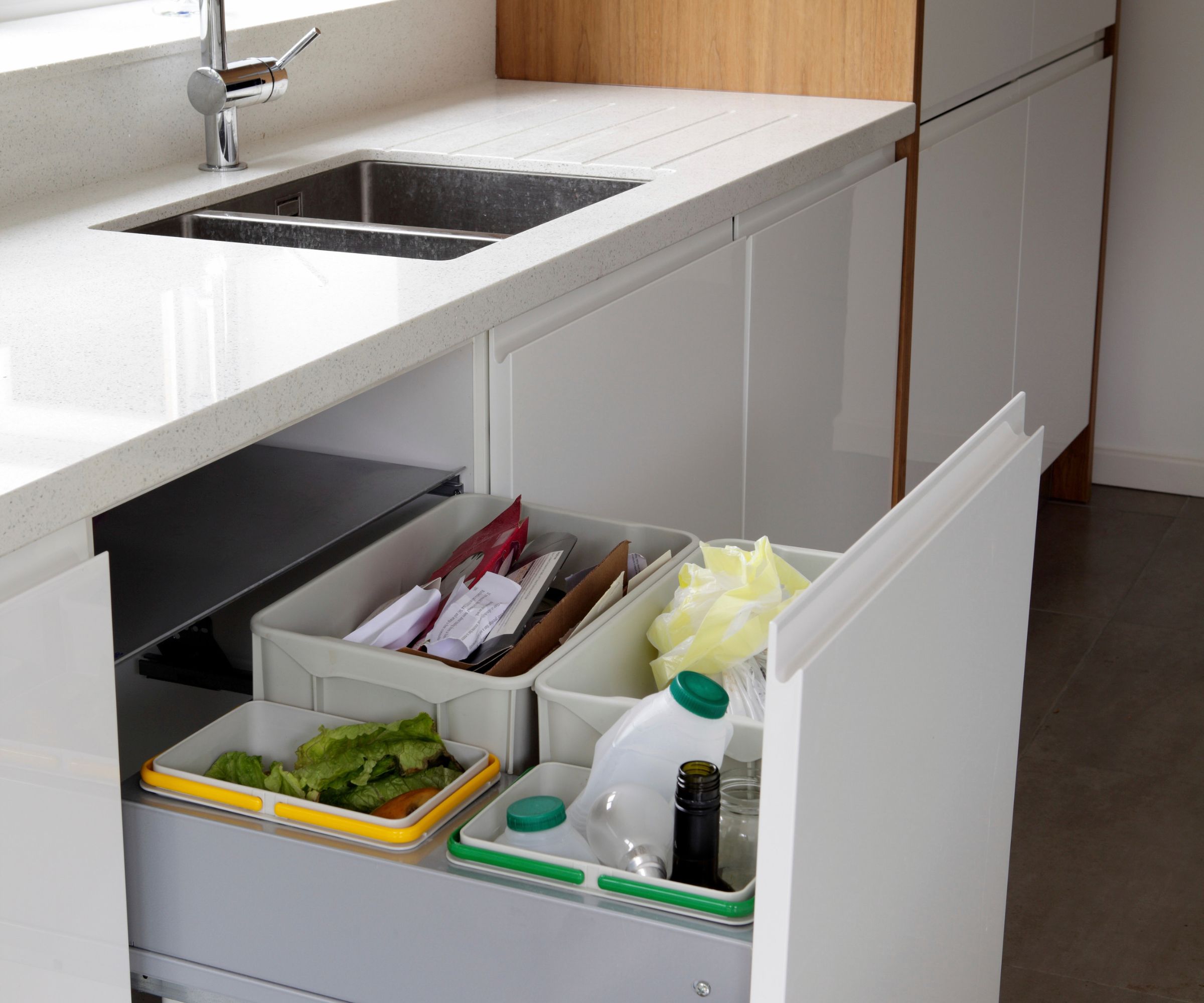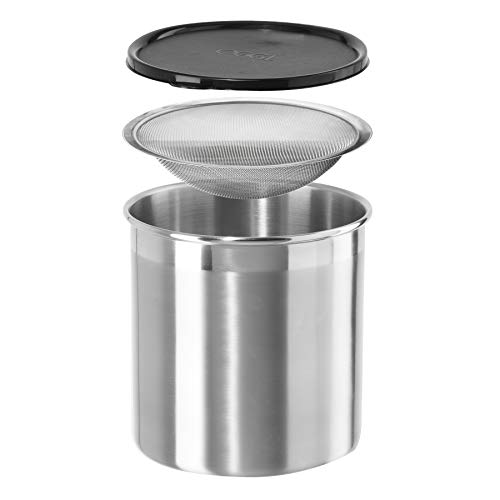4 easy ways to safely dispose of cooking fat – these won't clog up drains or cause smells in your kitchen
Cleaning pros reveal their favored fat disposal tips and tricks


Disposing of cooking fat safely is essential to avoid environmental harm, clogged pipes, and unpleasant odors. Improper disposal, such as pouring fat down the drain, can lead to severe plumbing issues and contribute to costly repairs.
From pouring into containers before putting into the trash, to making natural compost, our cleaning experts reveal their four favorite eco-friendly and effective ways to get rid of cooking fat responsibly.
So whether you're using the best air fryers or cooking on your stove top, here’s how you can safely get rid of used cooking fat without harming the environment or your plumbing.
1. Pour into a container

One of the simplest ways to dispose of cooking fat is by pouring it into a container, letting it set, and discarding it in the trash.
Vanessa Bossart, owner of GreenTerra Cleaning Service, says, 'This method is simple, cost-effective, and reduces the risk of clogging your plumbing. Simply let the fat cool slightly until it’s safe to handle but still pourable, then transfer it into a heat-resistant container. Once the fat solidifies, seal the container or carton and dispose of it in your regular trash.'
Bossart recommends using milk or half-and-half cartons as a convenient way to re-purpose these items for useful fat disposal, adding, 'Just remember to let it cool enough first. Never pour hot grease directly into a plastic container, as it may melt or leak.'
Other handy containers you may already have in the kitchen include aluminum foil you can shape into a vessel. It's also a surprising way to use Ziploc bags.
Steven Ip, founder of Cleanzen Boston Cleaning Services, says, 'One easy way to dispose of cooking fat is by using aluminum foil. Line a small bowl with a piece of foil, then pour the warm (but not hot) grease into it. Let the grease cool and solidify, then fold the foil tightly around it and throw it in the trash. This method is mess-free and keeps grease from clogging your pipes.
'I also like using a sturdy Ziploc bag [available at Amazon] to contain cooking fat. Once the grease has cooled a bit, pour it into a sealable bag and close it tightly. You can also wipe the pan with a paper towel and add that to the bag to prevent lingering odors. Then, simply throw the sealed bag in the trash.'
Ip recommends Reynolds Wrap Aluminum Foil from Amazon, and Ziploc Gallon Food Storage Bags, also from Amazon, adding, 'These food storage bags are great. Whereas some thin or perforated bags (like bread bags) can leak, these have a reliable, tight seal.'
There are also other useful ways to use aluminum foil around the house such as keeping pests out and sharpening scissors.
2. Solidify and scrape

For a more structured method, allow the cooking fat to go hard in the pan.
Ip says, 'Allow it to solidify, before scraping and disposing. If you don't want cooling grease sitting around for too long, mix a bit of flour into it while it’s still warm to help solidify it.'
Once solidified, scrape the fat into a sturdy trash bag or lined container using a spatula such as the OXO Nylon Flexible Turner Black Cooking Spatula from Target. Ensure the bag or container is tightly sealed before disposal to minimize odors and potential leaks.
You can also use a commercial product like FryAway Cooking Oil Solidifier.

This seemingly magical powder – famous thanks to its appearance on ABC's Shark Tank – takes the mess out of fat disposal by transforming used cooking oil into solid, organic waste that's easy to scrape and toss. Simply sprinkle and stir into hot oil until fully dissolved, let it cool and solidify, then toss into the trash, where it will break down in as little as 30 days.
3. Recycle or reuse

Cooking fat can often be recycled into biodiesel or other industrial products.
Bossart says, 'Many recycling programs convert used cooking fat into biodiesel, an eco-friendly fuel alternative. This method is sustainable and keeps fat out of landfills. First, check with your local recycling center or waste management service to see if they accept used cooking fat, then store the grease in a sealed, labeled container until you have enough to drop off.'
Container options include OXO Good Grips Airtight Containers from Amazon or Ball Glass Mason Jars from Walmart.
Bossart also encourages re-using cooking fat in the kitchen. She says, 'Another environmentally friendly and cost-effective option is to reuse fat in later cooking, reducing waste while enhancing the flavor of future meals. Simply strain the fat through a fine mesh strainer to remove any food particles, store the filtered fat in an airtight container in the fridge or freezer, then use it again when next frying or roasting.'
Cooking fat, especially oils, can be re-used for frying or sautéing. Cool the fat slightly, strain it through a sieve or cheesecloth to remove food particles, and store it in a clean, sealed container in the refrigerator. Re-use within a week and discard if the fat becomes dark, has an off smell, or shows visible impurities. Re-using fat conserves resources and reduces waste.
The Cuisipro Fat Separator from Amazon is a great tool for keeping and storing fat safely and easily. Perhaps best of all is how easy it is to clean – it's even dishwasher-safe.
Recycling cooking fat not only prevents waste but also contributes to eco-friendly energy solutions. For more tips, check out these things no one tells you about recycling at home.

Made of durable stainless steel, this sleek and sturdy oil container easily separates cooked food particles such as bacon bits from grease, then lets you store the grease for safe disposal or reuse. It's one-gallon capacity ensures you can store a large amount, while its clamp-on lid keeps the oil fresh for longer and avoids unwanted odor.
4. Compost

Small amounts of plant-based cooking oils can be composted if free of contaminants.
Mix the oil with dry compost materials like sawdust, shredded newspaper, or even paper towels to prevent excessive moisture buildup in your compost pile. Paper towels – such as these Bounty Paper Towels from Walmart – are a safe addition when used sparingly.
Avoid composting animal fats, as they can attract pests and create unpleasant odors. Composting plant-based oils in small quantities enhances soil health while keeping waste out of landfills.
FAQs
Should I pour fat down the drain?
No. Pouring fat down the drain can lead to clogs as it cools and solidifies within the pipes, often forming large blockages known as 'fatbergs'. These can cause costly plumbing repairs and contribute to sewer overflows that harm the environment. Even small amounts of fat, when combined with other debris, exacerbate the problem. Instead, use safe disposal methods like solidifying and sealing fat before discarding in the trash.
Can I mix different fats for disposal?
Yes, you can mix fats like oil and grease for trash disposal, but keep them separate if recycling. Recycling centers may have specific requirements for the types of fats accepted. Always let fats cool, then place them in a sealed, sturdy container to avoid spills and odors. For easier handling, consider using a solidifier before discarding.
What's the best way to store fat until disposal?
Store cooking fat in a heatproof container, such as a glass jar or metal tin, allowing it to cool slightly before pouring. Refrigerating the container prevents odors and solidifies the fat for easier disposal. Always ensure the container is tightly sealed to avoid messes and potential pest issues. For larger amounts, consider multiple smaller containers for easier handling.
So there you have it – four ways to safely dispose of cooking fat. Properly disposing of cooking fat is essential for maintaining your home’s plumbing and protecting the environment. Whether you choose to solidify, recycle, compost or reuse your cooking fat, these methods offer practical, safe solutions for a cleaner home and planet.
Since you've been busy in the kitchen, our professional chefs and cleaners have spilled their industry secrets to getting rid of cooking odors.

With more than a decade of experience writing news, lifestyle, consumer, and human interest articles for a wide range of national and international publications, Andy is a highly-qualified journalist writing features for the national press. From front porch to backyard, attic to basement, Andy has written about every area of the home. He specialises in bringing together the best industry expertise to answer all of your most pressing home and garden questions about seasonal and everyday cleaning, decluttering, organizing and DIY.
You must confirm your public display name before commenting
Please logout and then login again, you will then be prompted to enter your display name.
-
 This hot sleeper just found the perfect cooling mattress that's ended the sleepless summer nights – turns out $3,000 is the price you pay for an incredibly cool night's sleep
This hot sleeper just found the perfect cooling mattress that's ended the sleepless summer nights – turns out $3,000 is the price you pay for an incredibly cool night's sleepThe Leesa Legend Chill Hybrid Mattress might be an investment, but I think it's worth it to finally find something that actually keeps me cool throughout the whole night
-
 I'm an interior stylist whose job is to make rooms look nicer in an instant – these are the 5 items I always add to a bedroom to make it look 10x better
I'm an interior stylist whose job is to make rooms look nicer in an instant – these are the 5 items I always add to a bedroom to make it look 10x betterI have styled plenty of bedrooms in my time as an interior stylist, and these are the 5 pieces I reach for time and time again to instantly elevate the room
-
 5 seasonal items you should always clean before storing – cleaning experts reveal it's crucial for preventing mold, musty odors, and pests
5 seasonal items you should always clean before storing – cleaning experts reveal it's crucial for preventing mold, musty odors, and pestsIt’s a must to keep them safe, experts warn
-
 'It's a luxury' that delivers hotel appeal at home, but do you really need to iron bed sheets?
'It's a luxury' that delivers hotel appeal at home, but do you really need to iron bed sheets?Laundry experts reveal when it's a good idea, and when it's not worth the effort
-
 I've romanticized cleaning, and my tedious chores are easier than ever – 5 ways to turn loathed housework into 'meditation'
I've romanticized cleaning, and my tedious chores are easier than ever – 5 ways to turn loathed housework into 'meditation'Banish dread by turning cleaning into a moment for wellness
-
 Experts reveal why tackling 'non-preferred tasks' is the key to removing annoying chore blockers at home
Experts reveal why tackling 'non-preferred tasks' is the key to removing annoying chore blockers at homeProfessional home organizers say it's a game-changer, especially if you have ADHD
-
 This $4 natural pantry staple easily cuts through stubborn kitchen hood grease – cleaning experts reveal the dangerous hazard it will stave off
This $4 natural pantry staple easily cuts through stubborn kitchen hood grease – cleaning experts reveal the dangerous hazard it will stave offIts potential reaches far beyond baking, experts say
-
 Bar soap vs. liquid soap – cleaning experts reckon there is only room for one in this soap showdown
Bar soap vs. liquid soap – cleaning experts reckon there is only room for one in this soap showdownIn the showdown of the suds, only one kind of soap comes out on top
-
 Homes & Gardens discussion: What is your most hated household chore?
Homes & Gardens discussion: What is your most hated household chore?Take a peek as we lift the lid on our group chat
-
 I love this super affordable, clever hack to descale my kettle – it prevents food waste, too
I love this super affordable, clever hack to descale my kettle – it prevents food waste, tooWhen life gives you lemons...